PERFORMERS
Gagaku
Gagaku, the oldest form of classical music in Japan, is a performing art established as a result of cultural exchanges with the Asian continent since the Nara Period (710-794). The music, dance and musical instruments are transmitted and have performed as ceremonial music inside the Imperial court, temples, and shrines, even today.
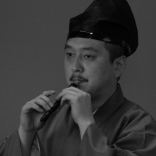
稲葉 明徳 Inaba Akinori
He started hichiriki at the age of 8 and studied under Togi Kanehiko of the Imperial Household Agency when he was 11. He became a member of the Japan Gagaku Association in 1979, was selected for the Tokyo Gakuso in 1980 and participated in numerous gagaku performances with Ono Tadamaro. He joined performances both domestically and internationally, CD production and numerous contemporary music performances mainly at the National Theater of Japan.
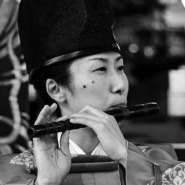
中村 香奈子 Nakamura Kanako
Performs in variety of stages inside and outside Japan as a performer of flute, Gagaku, and reproduction instruments of Shosoin Treasure Repository. Studied Gagaku under Shiba Sukeyasu, studied ancient songs and Umai under Bunno Hideaki. Masters degree from the Tokyo University of the Arts, faculty of music, department of traditional Japanese music. Leader of “Kofusha Gagakunokai.” Joint leader of “Kabuchoka Fuyugekkyo Gagakudan” and “Gagaku Zanmai Nakamurasan-chi.” Appeared in many CDs such as “Music For Onmyoji/Reigakusha.” Performed flute in the Toho movie “Onmyoji Ⅱ.” https://kofusha.amebaownd.com/
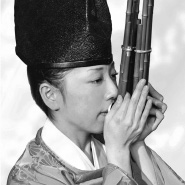
中村 華子 Nakamura Hanako
Masters degree from the Kunitachi College of Music, faculty of music. Studied Sho under Miyata Mayumi and Oono Tadaaki, Gakubiwa under Nakamura Kahoru, Gagaku ensemble under Shiba Sukeyasu. Chosen as the trainee under the domestic program for upcoming artists of the Agency for Cultural Affairs of 2006. As a member of “Reigakusha,” plays in National Theaters, elementary and middle schools, and overseas performances. Formed “Shogirls,” a trio only by Sho players, and carries out activities to spread the fascination of Gagaku. https://b-sheet.jp/
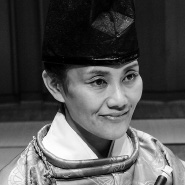
中村 仁美 Nakamura Hitomi
While studying at the Tokyo University of the Arts, studied Gagaku under Shiba Sukeyasu, and Hichiriki under Okubo Nagao. Plays both classic and modern pieces, acts jointly with performers of various genres. Often performs in overseas such as New York and Paris. Recorded her commissioned premiere Hichiriki solo pieces and ensemble pieces in the CD titled “Hichiriki Mangekyo” and “Koka no Koe” (ALM). Received the new face award of Matsuo Prize of Entertainment in 2010. A member of the “Reigakusha.” A part-time professor of the Kunitachi College of Music. https://hitomi3.jp
Archive video
NOBODY KNOWS 2020 at Satsumasendai, Kagoshima Pref.
Nippon Takaramono Project 2018 at Tagajo, Miyagi Pref.
Gidayu Bushi
Gidayu Bushi is the music used in Ningyo Joruri, Japanese puppet theater,started by Takemoto Gidayu in Osaka
in the late 17th century. "Ningyo Joruri Bunraku" was registered as a World Cultural Heritage site in 2003.
"Tayu", who is in charge of the voice, and a shamisen player are paired to talk about the drama. The
shamisen for Gidayu Bushi is Futozao shamisen, the heavy body, using thick pluckiness, and the dynamic and
powerful sound strikes the heart of the listener. When performed in a Kabuki turned theater, it is called
"Takemoto", and the music is called "Su Joruri".
(参考: 日本の伝統芸能)
Tayu
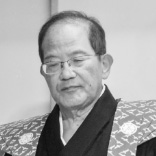
竹本 友廣 Takemoto Tomohiro
Since 1990, studied under Tsuruzawa Tomoji, a living national treasure of Gidayu-bushi and shamisen, and engaged in training. In 1994 and 1995, won consecutive championships in the Japan Championship for Amateur Gidayu and received the Ozeki Prize. Awarded the Higashi Ozeki Prize at the Awaji Amateur Gidayu Examination Committee in 2005, and was recommended as the 28th Yokozuna. Was in charge of the composition and the narration of the new written joruri by Setouchi Jakucho at the 2007 National Culture Festival Tokushima Tournament. Chairman of Tokushima Sogikai.
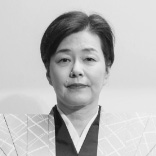
竹本 友和嘉 Takemoto Tomowaka
First stage in 1975. In 1996, became an apprentice to Tsuruzawa Tomoji (Living National Treasure), came to be known as Takemoto Tomowaka from the following year. In addition to performing at the Tokyo National Theatre and the National Entertainment Hall in Tokyo, has also participated in numerous overseas performances. Holds the "Gidayu-bushi (type of reciting used in the puppet theater) Workshop" at elementary and junior high schools, and Gidayu classes and Awajikai are held at Awa Jurobei Residence. Received the Ningyo Joruri Association Encouragement Award in 2002, and the Ningyo Joruri Chinami Association Women's Category Encouragement Award in 2009, and the Tokushima Arts and Culture Encouragement Award in 2017. Holder of important intangible cultural properties (general certification).
Shamisen
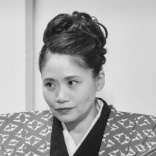
鶴澤 友輔 Tsuruzawa Tomosuke
Given the name Tsuruzawa Tomosuke by Tsuruzawa Tomoji, a living national treasure. At the National Culture Festival Tokushima 2007, composed and performed the new Ningyo Joruri "Yoshitsune Kaido Musume Koikyo" and "Moraes Koi Henro" written by Setouchi Jakucho. Also composed and played the "Heart of Awa" at the National Culture Festival in 2012, the first to held at the same place in Japan. Vigorously engages in performances outside the prefecture and overseas, receiving the Tokushima Cultural Association's Arts and Culture Encouragement Award in 2001 and the Awa Cultural Creation Award from Tokushima Prefecture in 2006.
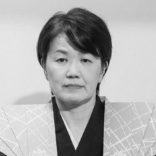
鶴澤 友勇 Tsuruzawa Tomoyu
In 1978, became an apprentice to Tsuruzawa Tomoji (a living national treasure), and joined the Awaji Ningyoza Theatre in 1985. Came to be known as Tsuruzawa Tomoyu. Has participated in numerous overseas performances. Has appeared in the National Theater, Kyoto University of Art and Design "Shunjuza," and the Women's Style Gidayu Concert sponsored by the Gidayu Preservation Society. In addition, holds Awajikai, "Gidayu-bushi Shamisen Workshop" for elementary and junior high schools, and teaches tayu (narrator in joruri) and shamisen at the Local Performing Arts Department of Minami Awaji City Mihara Junior High School. In 2000, received the Ningyo Joruri Chinami Association Encouragement Award, and in 2013 received the 33rd Pola Prize for Traditional Culture. Holder of important intangible cultural properties (general certification).
Archive video
NOBODY KNOWS 2021 at Tokushima.
Kokyu
It is the only traditional Japanese instrument that rubs strings with a bow to play. In the Edo period, it
was actively performed in the form of Sankyoku, a three-piece ensemble (after the Meiji era, shakuhachi
were often used in the three-piece ensemble) along with koto and shamisen. It is also used in Kabuki for a
unique and pathetic sound effectively.
(参考: 文化デジタルライブラリー)
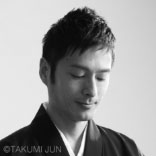
木場 大輔 Kiba Daisuke
Born on Awaji Island. Studied classical kokyu under Kazuo Hara. At the same time, studied classical kokyu of Kyoto, Osaka, and Tokyo, as well as the style of kokyu playing techniques from various parts of Japan, such as Bunraku, Kaze no Bon, and Owari Manzai. Has been developing the new playing style of these combination, and a four-strings kokyu which has a wide range of low sounds, and its composition, shedding light on the value of kokyu tradition. His performance on NHK World’s “Blends” was broadcasted around the world. Has been active in a wide range of activities including a national tour of the Yoshida Brothers, unit activities with the koto and piano, and also organizes “Cross-cultural String Orchestra” featuring the kokyu, and other stringed instruments from different countries. He also has developed his composition, including “Suite Kojiki” and “Silk Road Suite,” focusing on Japan with world’s traditional instruments.
Archive video
NOBODY KNOWS 2021 at Komatsu, Ishikawa Pref.
Satsuma Biwa
Satsuma Biwa was developed in the Satsuma district (now Kagoshima prefecture) at the end of the Muromachi period (1336〜1573). The style of playing with a wide-open tip is impressive, and it is known as a magnificent and masculine-sounding narrative music. Many of them have a rigid content that is based on the spirit of Bushido and lessons learned, and Biwa effectively colors the voice that tells a long drama.
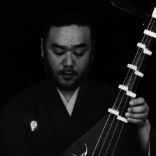
友吉 鶴心 Tomoyoshi Kakushin
Born in Asakusa, Tokyo in 1965. He contributed to further development of Satsuma Biwa, a great achievement of his two grandfathers, with his master, Tsuruta Kinshi. He succeeded the name of his grandfather. He was awarded prizes by the Minister of Education, Culture, Sports, Science and Technology and the NHK Chairman. He is active both in Japan and abroad, including performances hosted by the National Theater of Japan. He has been in charge of the examination and training of all the performing arts in many Taiga historical dramas including "Segodon" and special dramas. https://www.biwagaku.com/
Archive video
NOBODY KNOWS 2021 at Satsumasendai, Kagoshima Pref.
NOBODY KNOWS 2020 at Satsumasendai, Kagoshima Pref.
Shakuhachi (bamboo flute)
The shakuhachi used in general today is called "Fuke Shakuhachi", and there are various lengths based on
the standard length of 1 shaku 8 sun (about 54 cm) . In the Edo period, monks of the Fuke sect (komuso
monks) were specialized. Wearing a canopy and begging alms with a shakuhachi in his hand, it stands out in
Edo customs. It is characterized by meditative and introspective music, and as a two-class school, there
are Kinko-ryu that began in Edo in the middle of the Edo period and Tozan-ryu founded in Osaka in the
Meiji period. In addition to the solo music ("honkyoku") that plays only with the shakuhachi, it is
performed often as three-piece ensembles with shamisen and koto, and is widely used for everything from
folk songs to contemporary creative activities.
(参考: 日本の伝統芸能)
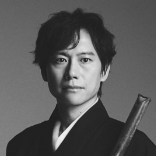
藤原 道山 Fujiwara Dozan
Graduated from Tokyo University of the Arts, with a Master’s degree. While in college, performed in front of the Imperial family at Tokagakudo in the Imperial Court. Has won the Ataka Prize, the Person of Cultural Merits Award of Edogawa-ward, the new face award of Matsuo Prize of Entertainment, the Excellence Award of the Agency for Cultural Affairs Art Festival in 2018 for “TOKI-winter-,” and the 71st Minister of Education, Culture, Sports, Science and Technology Award for Fine Arts in 2020. He not only performs and studies the traditional music, but collaborates as a duo with marimba player SINSKE, appears in “KOBUDO” with Senoo Takeshi(piano) and Furukawa Nobuo(cello), performs in the band ensemble of shakuhachi called “Fugachikuin.” Active in various fields such as stage music, music supervision, and a regular performer of the NHK “Nihongo-de-asobo.” https://dozan.jp/
Archive video
NOBODY KNOWS 2021 at Satsumasendai, Kagoshima Pref.
Daikagura(traditional juggling)
Traditional performance including lion dance and juggling. A performing art whose main purpose is a form of prayer by parishioners dedicated to God. It is said that Ise Shrine and Atsuta Shrine are the birthplaces of this art. During the Edo period, the custom of professional performers consisted of enshrining the houses of the parishioners with a lion dance as a New Year’s tradition of prayer purification for health and longevity. Eventually it evolved into a form of performing arts on stage with dance, acrobatics, storytelling, and music.
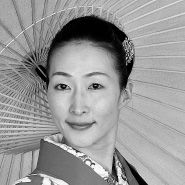
鏡味 味千代 Kagami Michiyo
After graduating from the International Christian University, worked at an advertising agency for 7years, and in 2007 became the trainee of National Theater Daikagura (street performance of a lion dance and jugglery). After training, became a pupil of Kagami Yujiro and made her stage debut in 2011. Performs in storytellers’ theater, schools, and in parties by way of entertainment. Is expanding the range of activities by using her linguistic ability, such as performing Daikagura in English and overseas performances.
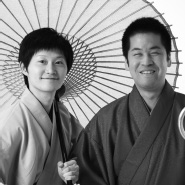
丸一小助・小時 Maruichi Kosuke & Kotoki
A Daikagura (street performance of a lion dance and jugglery) duo by Harumoto Kosuke and Kagami Kotoki. To inherit “Daikagura,” Japanese traditional performing arts, they became disciples of Kagami Yujiro. After finishing the training under National Theater Daikagura, they formed a duo in 2015. They perform acrobatics and Shishimai (lion dance) mainly in storytellers’ theater around Tokyo. Member of Rakugo Art Association and Daikagura Kyokugei Kyokai group.
Tsugaru Shamisen
Originally this instrument was used to accompany folk songs in the Tsugaru region of Aomori Prefecture. Gradually it also began to be used to accompany improvisational performances. Around the 1960’s it became known as the "Tsugaru Shamisen". In the past, it was customary for visually impaired musicians to go around to the homes, but now it is performed on stage as a solo instrument with a wealth of instrumental skills. As the practice of using, it as a solo instrument became more popular, the use of a thick neck (futozao) shamisen that can produce loud sounds and the unique playing method of hitting the instrument with a prectrum was incorporated.
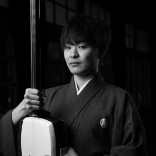
浅野 祥 Asano Sho
Born in Miyagi prefecture, 1990. When he was 14, he was the youngest person to win the highest rank A level of the All-Japan Tsugaru Shamisen Contest and won for three consecutive years up to 2006, recognized in its Hall of Fame. While passing on folk song by oral tradition, he collaborates with many artists inside and outside Japan. With his astounding performance skills and natural charm, his power to convey the fascination of Shamisen music stands above the rest. http://sho-asano.com/
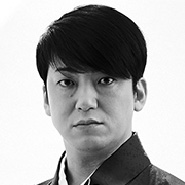
吉田 健一 Yoshida Kenichi
Since his debut in 1999, composed many of the Yoshida Brothers’ pieces and collaboration pieces, reaching the 20th anniversary as Yoshida Brothers this year. As well as domestic and foreign concert activities, produces a Tsugaru-jamisen group “Shippu,” a group of young top-class players. As the 2015 cultural ambassador of the Agency for Cultural Affairs, gave lectures and demonstrations in Europe. As his range of activities is expanding, he is expected to be a prominent world-wide artist. https://yoshida-brothers.jp
Archive video
NOBODY KNOWS 2021 at Hiraizumi, Iwate Pref.
NOBODY KNOWS 2020 at Tsuruoka, Yamagata Pref.
Nippon Takaramono Project 2018 at Tsuruoka, Yamagata Pref.
Nippon Takaramono Project 2018 at Hasami, Nagasaki Pref.
Nagauta
The Nagauta, shamisen music that adds color to the Kabuki theater play and developed together. The shamisen was used for its light and well sounding tones. Flute, Otsuzumi, Kotsuzumi, Taiko and other "Hayashi (percussions)" also accompany multiple shamisen and songs in order to create a lively performance on stage or contribute emotion to the scene.
Shamisen
The shamisen was completed as in the Edo period as an accompaniment instrument for songs. It is said that it is based on the Sanxian that was introduced from China to Japan around the 16th century. In most cases, three strings of different thickness are played with a plectrum. There are various types of "vocal music" in traditional Japanese music, but most of them use the shamisen as accompaniment. It is generally categorized by the thickness of the neck. Futozao, the thickest neck, is used for Gidayu-bushi Joruri. Chuzao, the medium neck, is used for Jiuta, Jobanzu, and Kiyomoto-bushi. Hosozao, the thinnest neck, is used for Nagauta and Kato-bushi.
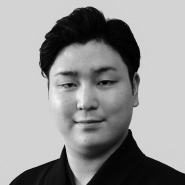
杵屋 勝司郎 Kineya Katsujiro
Masters degree from the Tokyo University of the Arts, faculty of music, department of traditional Japanese music. In 2011 and 2012, won the 1st prize in the National Competition of Tsugaru-jamisen in the junior class, and in the middle and high school section. Played in the opening ceremony of 2017 World Baseball Classics. Studied Nagauta-shamisen and in 2019 succeeded the professional name Kineya Katsujiro. Participated in recording of the TV animation “ONE PIECE” Wanokuni series as the person in charge of shamisen music. Member of the ”Seikyokai,” an orchestra of young expected Nagauta players. Won the Touonkai Prize and Mitsubishi Chisho Prize.
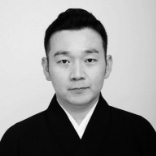
杵屋 勝十朗 Kineya Katsujuro
Born on 1978 in Chiba. Graduated from Tokyo University of the Arts. Has shiny sound and skillful technique. Plays in variety of performances such as Kabuki, Nihonbuyo (Japanese classical dance), and other concerts. Has won awards in playing Tsugaru-shamisen as well.
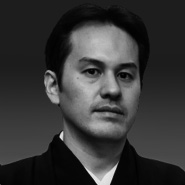
杵屋 五三吉雄 Kineya Gosakichio
Born in Tokyo on 1979. Son of Kashiwagi Minoru, the head of traditional folk song Kashiwagi school. Started training nagauta shamisen at the age of 8, hence spanning a career of 31years! His honest and traditional style is based on his firm technique; performs not only in Kabukiza, but dance performances and televisions as well.
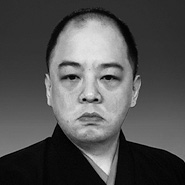
杵屋 裕太郎 Kineya Hirotarou
Born in Tokyo. Studied Nagauta under Kineya Hitomitsu, Kineya Katsumatsu, and Kineya Toshimitsu. Studied musical instruments under Katada Kisaburo, and Japanese dance under his father Fujima Toshizo, and his mother Fujima Makiko. He now performs not only in Kabuki performances but also in varieties of other events.
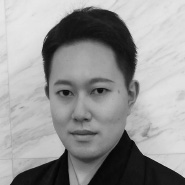
稀音家 六四郎 Kineya Rokushiro
Born in 1986. Started playing shamisen since early age, and became a disciple of Kineya Yusuke at the age of 16. At the age of 17, made his debut as a Kineya Ichiro, shamisen player. Performs in Kabuki performances, concerts, and televisions. Last year he succeeded his father and became Rokushiro Kineya (Ⅵ). He is the head of “Nagauta Kenseikai.”
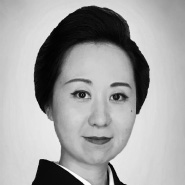
東音 南谷舞 Touon Minamidani Mai
Born in Okazaki city, Aichi prefecture. Started Japanese dance from the age of 3, and Nagauta-shamisen from the age of 10. As a student of the Tokyo University of the Arts, received the Jokan Prize and the Ataka Prize. She now dedicates in training the young, still performs vigorously in many stages inside and outside Japan, and also composes music.
Hayashi(classical percussions)
In Kabuki and Bunraku, "Hayashi" enhances a scene by creating a dynamic atmosphere. Using Flute and various percussions such as Taiko, Tsuzumi, Chinese gong, kane (small bell), and tools have been incorporated in order to more effectively produce the scene of the play.
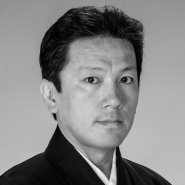
堅田 新十郎 Katada Shinjuro
Born in 1967, Tokyo. The second son of Katada Kisaku, a Living National Treasure. Started performance activity since 1990 and succeeded the professional name Katada Shinjuro Ⅳ in 1998. As a musical accompanist, works on dancing, Kabuki performances, TV & radio appearances, recordings, and performances in foreign countries. Lecturer at Toho Gakuen College of Drama and Music, and at Yokohama Asahi Culture.
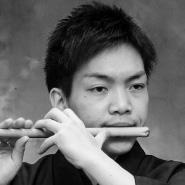
澄川 武史 Sumikawa Takeshi
Born in Masuda city, Shimane prefecture. His origin stems from folk art “Iwami Kagura (noh dance).” He appears not only in traditional Japanese music concerts, but in Rakugo parties, NHK Taiga Drama Series “Gunshi Kanbei,” and dedication drama “Korin” performed in Kamigamo Shrine directed by Miyamoto Amon. Like the performance of the music during the movie of “Wakaokamiwa Shogakusei!” his activities span over many fields.
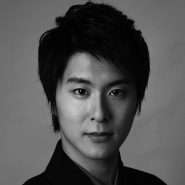
住田 福十郎 Sumida Fukujuro
Born in 1992. Trained traditional Japanese music musical accompaniment to under Sumida Chojuro, his father, from early childhood. Now performs in traditional Japanese music concerts and balls around Japan. Moreover, acts as a voice actor in the name of Kayatama Fukujuro, and is expanding the scope of his activities.
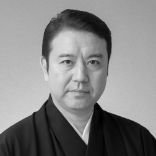
田中 傳一郎 Tanaka Denichiro
Studied musical accompaniment under the late Mochizuki Bokusei Ⅳ(living national treasure). Graduated from Tokyo University of the Arts, faculty of music, department of traditional Japanese music. Was allowed the name Mochizuki Tasaburo, and attended in Kabuki performances, dance performances, concerts and others with his master as the musical accompanist. While in college, extended his fields outside of classical music such as recordings and live performances of pop and classical music. Not only performs in Japan but also participates in overseas Kabuki performances such as in France and Monaco. In 2015, succeeded his grandfather’s professional name, Tanaka Denichiro, and performs mainly in Kabuki performances.
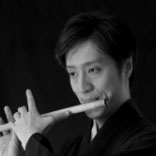
藤舎 推峰 Tosha Suiho
Studied under his grandfather, Tosha Shuho, who was the head of the Tosha school branch flute family, his uncle, Tosha Meisho, and his father, Nakagawa Yoshio. Succeeded to the name “Suiho” in 2004. While he was a student of Tokyo University of the Arts, received Jokan Award, the Dosei-kai Award for new talent, and the Acanthus Music Award. Has appeared in many concerts and broadcasts, including performances sponsored by the National Theatre of Japan and NHK “Nippon-no-Geino”, and has also participated in overseas performances. In addition to his activities in the classical arts, has participated in concerts and recordings of pop artists. A Cultural Exchange Ambassador for Agency for Cultural Affairs in 2020 and 2021.
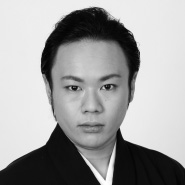
福原 百貴 Fukuhara Hyakutaka
Masters degree from the Tokyo University of the Arts, faculty of music, department of traditional Japanese music. As a Nagauta musical accompaniment flute player, appears in traditional Japanese music concerts, TVs, radios, and Ustream. Performed in the Europe live of RockBand [AKARA]. Played drum session with Shinya in LUNA SEA 30th anniversary concert. As a member of the Wakajishikai, classic musical accompaniment performance group, received the Japanese Traditional Culture Promotion Foundation’s Nakajima Katsusuke Creation Award and Japan Arts Foundation’s Creating Tradition Prize.
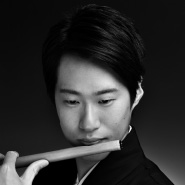
藤田 和也 Fujita Kazuya
Born in 1989. Began playing festival music from 11 years old, Edo festival music and Kabuki musical accompaniment from 16 years old. Other than performing in Kabuki and Japanese dance performances, appears in festivals. Appears in many performances including elementary school visits and voluntary performances in the traditional arts company called [Wazawogi] to spread Japanese dance, shamisen music, and traditional Japanese music musical accompaniment.

望月 左太助 Mochizuki Satasuke
Started playing Japanese drum since early childhood. Masters degree from the Tokyo University of the Arts, faculty of music, department of traditional Japanese music in 2019. While in college, won the Jokan Prize, the Ataka Prize, and the Acanthus Music Prize. Performs in both inside and outside Japan as the musical accompanist such as the performance in “Heisei Nakamura-za Spain performance”, “Modern Noh Abeno Seimei starring Nomura Mansai,” and a lot more. Appeared also in NHK Taiga Drama Series “Naotora” and “Pythagora Switch.”
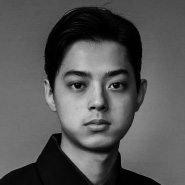
望月 大貴 Mochizuki Daiki
Born in 1999. The son of Mochizuki Tazaemon Ⅻ. Learned festival music and Noh play drum from early age, and made his Noh drum debut in “Hinaduru Sanbasou” at the age of 3. Appeared in the autumn concert of the Toyama Traditional Japanese Music Association in 2009. Is currently a student of Meiji University and performs in traditional Japanese music concerts and Japanese dance performances as traditional Japanese music accompanist.
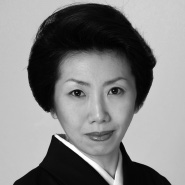
望月 晴美 Mochizuki Harumi
Made her debut at age 6. Her mother and grandmother are both Mochizuki style woman musical accompaniment. Her father is a Tayu, a Joruri narrator. In 2007, released a CD, “Hayashi-no-Otodama,” as a record section participation piece of the Agency for Cultural Affairs art festival. Won the Agency for Cultural Affairs art festival music section rookie of the year title by “The third Mochizuki Harumi musical accompaniment concert” in 2009. Completed Aoyama Gakuin University society information department WSD23 period.
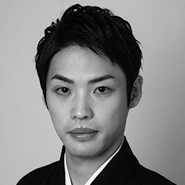
望月 秀幸 Mochizuki Hideyuki
Born in 1983 in Tokyo. Learned Ohayashi (musical accompaniment) since early age, has 30 years of history as a performer! Appears in Kabuki performances at Nakamuraza and many other dance performances. Recently has produced “Ohayashi project,” a project aiming for the coexistence of Eastern and Western music.
Archive video
NOBODY KNOWS 2021 at Satsumasendai, Kagoshima Pref.
NOBODY KNOWS 2021 at Komatsu, Ishikawa Pref.
NOBODY KNOWS 2020 at Isehara, Kanagawa Pref.
NOBODY KNOWS 2019 at Takayama, Gifu pref.
NOBODY KNOWS 2019 at Nanto, Toyama pref.
NOBODY KNOWS 2019 at Bungotakada, Oita pref.
Nippon Takaramono Project 2018 at Isehara, Kanagawa Pref.
Nippon Takaramono Project 2018 at Kurashiki, Okayama Pref.
Nippon Takaramono Project 2018 at Komatsu, Ishikawa Pref.
Nippon Takaramono Project 2018 at Yamaga, Kumamoto Pref.
Nihonbuyo(Classical Japanese Dance)
NIHONBUYO is dance based on the techniques of Kabuki dance. Its main characteristic is that it developed
from the male-only Kabuki theatre and has incorporated dance by female performers. It also spread when it
became popular to take classes to learn NIHONBUYO, and it has been a supporting pillar of Japanese
traditional culture. NIHONBUYO has three elements: odori, mai, and shigusa. Odori emphasizes the element
of rhythm and moving to it, and mai is soft, with internal expression at its base. In Modern Japan,
NIHONBUYO became independent from Kabuki, and many professional NIHONBUYO performers emerged and
established active careers. It captured the fascination of many people and created a surge in traditional
arts. With a mastery that has been achieved over time, and a refinement that extends to its limits,
NIHONBUYO can be described as the essence of traditional art.
(Reference: Website of The
NIHONBUYO Association)
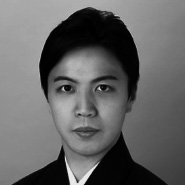
花柳 源九郎 Hanayagi Genkuro
Born on 1981 in Nara. Graduated from Tokyo University of the Arts in 2003. Is known for his colorful and powerful performance style which fascinates people. Won the Incentive Award of the Minister of Education, Culture, Sports, Science and Technology in 2017. Received the new face award from Association of Dance Critics in 2013.
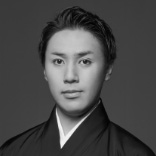
藤間直三 Fujima Naozo
Born in 1992 in Tokyo. A Fujima school of Japanese dancing instructor. Started learning Japanese traditional dance at the age of 6. Masters degree from the Tokyo University of the Arts, department of traditional Japanese music, Japanese dance study. Won the first place in 2012 Tokyo Shimbun whole country dancing contest Japanese classical dancing Part 1, the 2015 Minister of Education, Culture, Sports, Science and Technology prize, the prize for New Year dancing meet and the President Award. Appears in performances hosted by association of Japanese dance, and a lot of other stages. Also active in choreography and direction.
Archive video
NOBODY KNOWS 2021 at Satsumasendai, Kagoshima Pref.
NOBODY KNOWS 2021 at Tokushima.
NOBODY KNOWS 2021 at Hiraizumi, Iwate Pref.
NOBODY KNOWS 2020 at Satsumasendai, Kagoshima Pref.
NOBODY KNOWS 2020 at Isehara, Kanagawa Pref.
NOBODY KNOWS 2019 at Takayama, Gifu pref.
NOBODY KNOWS 2019 at Nanto, Toyama pref.
Nippon Takaramono Project 2018 at Isehara, Kanagawa Pref
Nippon Takaramono Project 2018 at Komatsu, Ishikawa Pref.
Nippon Takaramono Project 2018 at Niigata, Niigata Pref.
Nippon Takaramono Project 2018 at Wakayama, Wakayama Pref.
Nippon Takaramono Project 2018 at Yamaga, Kumamoto Pref.
Nohgaku
Noh and Kyogen are representative Japanese performing arts that have been passed down from generation to
generation without interruption for more than 650 years since the Muromachi period. They are collectively
called "Nohgaku". Today, it is desginated as the Intangible Cultural Heritage by UNESCO. It is said that it
has influenced various performing arts. Noh is a musical and dance drama performed to the accompaniment of
Utai (songs and lines) and Hayashi (musical instrument), and is characterized by performers wearing masks
called Noh masks in many pieces. The characters are not only human, but also non-earthly things such as
gods, ogres, monsters, and ghosts. The performers express their emotions with simple, stylized movements.
Kyogen is a comedy that mainly describes the daily life of ordinary people in the middle ages. Unlike Noh,
most of the plays are performed without masks, and the universal humor of human beings is depicted through
laughter.
(Reference: Website of The Nohgaku
Performer’s Association)
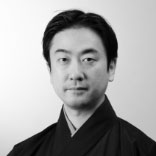
佐々木 多門 Sasaki Tamon
Became a Noh actor of the Kita school from his father’s generations. His father was from Sakura Moto-bo, Enjoin Temple, where actors performed for the stage of Chusonji Temple. In addition to his activity at Kita Noh Theater in Tokyo, Tamon focuses on promotion of Noh in Tohoku area, such as Chusonji Takigi Noh, Sendai Aoba Noh, and Hekisuien Noh in Shiraishi City, and performs both in Japan and overseas. He enlightens children in school, has lectures to promote Noh in various places. He has performed some large-scale songs such as “Shojoran”, “Dojoji”, and “Okina” at Chusonji Hakusan Shrine Noh Theater, which has long connections with him.
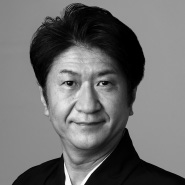
野村 万禄 Nomura Manroku
Izumi style Kyogen (Noh comedy) performer. Born in 1966 and studied under his uncle, Nomura Man, a living national treasure. In 2000, succeeded the name of Nomura Manroku Ⅱ. The representative of Man Noh comedy Kyushu Branch. While performing in many stages based in Kyushu, he instructs Noh comedy and gives commentary in training halls by the connection with school education, serving for the spread and the development of Noh comedy. Won the 2010 Fukuoka Culture Prize, encouragement section. A part-time teacher of Chikushi Jogakuen University, Fukuoka University of Education, and Oita University. The holder of Important Intangible Cultural Asset.
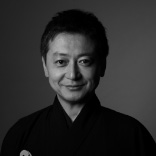
山井 綱雄 Yamai Tsunao
A Komparu school Noh player. Engages in the Noh spread and the enlightenment of “the heart of Japan” under the faith, “Noh is the world's best art.” Holds many workshops for beginners and performances in schools. Holder of Important Intangible Cultural Asset. Director of Nonprofit foundation “Association of Noh”, the 2014 cultural ambassador of the Agency for Cultural Affairs, lecturer at NHK Cultural Center Aoyama principal school & JR East “Holiday club of Adults”. Performs overseas and costars and make original works with other genres artists. Challenges new possibilities of Noh.
Archive video
NOBODY KNOWS 2021 at Hiraizumi, Iwate Pref.
NOBODY KNOWS 2020 at Tsuruoka, Yamagata Pref.
NOBODY KNOWS 2019 at Tsuruoka, Yamagata Pref.
NOBODY KNOWS 2019 at Bungotakada, Oita pref.
Rakugo
Representative of Japanese storytelling. A performer sits on a cushion wearing a kimono and performs
funnyly, mainly through conversations between the several characters. At the end of the story, there was
”ochi”, a point of the joke, so it was said that it was “otoshi-banashi”. The term "rakugo" became common
in the Meiji period (1868-1912) .
(参考: 日本の伝統芸能)
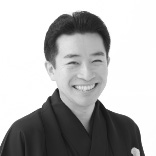
金原亭 馬玉 Kingentei Bagyoku
Born in 1979 in Isehara city, Kanagawa prefecture. Became a disciple of Kingentei Basho Ⅺ in 2000. Promoted to the highest rank in 2015 and succeeded the name Kingentei BagyokuⅡ. Performing Rakugo (a form of Japanese verbal entertainment, involving a lone storyteller onstage depicting a comical story) throughout the country at major venues and schools. A Member of "Shikashibai", a play by storyteller founded in the Edo era, and also an expert of farce in Daikagura (street performances of a lion dance and jugglery) and Nihonbuyo (Japanese classical dance). Since 2016, has been contributing to the special onboard announcements of the Kanachu bus.
Guitar
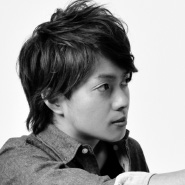
定塚 洋平 Jozuka Yohei
After graduating from music school, studied under guitarist Koga Kazunori. Participates in support and the recording of performances of various artists as a guitarist. Appears on television programs such as “Love music”, “Premiere Melodix!”, besides, acts as the accompaniment of the musical such as “Ambition of Nobunaga” and “Fu-un Shinsengumi”. Also does compositions and arrangements.
Actor
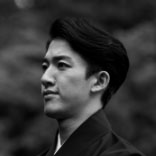
尾上 右近 Onoe Ukon
Is the second son of Kiyomoto EnjudayuⅦ, a head family of Kiyomoto school. His great grandfather is Onoe KikugoroⅥ. When he was 7, he debuted as Matsu-mushi in “Bukaku Setsugekka” at Kabuki-za theatre. At the age of 12 he succeeded to the name of Onoe UkonⅡ at “Ninjou Banashi Bunnshichi Mottoi” in Shinbashi Embujo Theater where he played the part of Choubei’s daughter, Ohisa. He succeeded to Kiyomoto Eijudayu in January, 2018. Has been introducing the charm of Japanese traditional arts including Kabuki as a host of NHK radio program “KABUKI TUNE” since 2018.
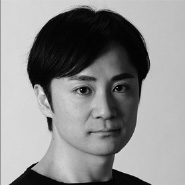
斉藤 祐一 Saito Yuichi
Born in Chiba. Entered Bungakuza institute in 2001 and has been its member since 2006. Other than stages, appears on TV dramas such as “Aibou”, “Iryuu Sousa”, “Rinjo”, and advertisements. Participated also in the dubbing of Studio Ghibli's “From Up On Poppy Hill” and “The Wind Rises”, thus acts widely.
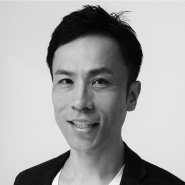
助川 嘉隆 Sukegawa Yoshitaka
Born in Hokkaido. After graduating from the Toho Gakuen Junior College, entered Bungakuza institute in 1997. Since 2002, acts as a stage actor of Bungakuza, appearing in TV and movies such as “Great War of Archimedes” and “Yokogao”. Instructed Hokkaido dialect in NHK morning drama “Natsuzora”.
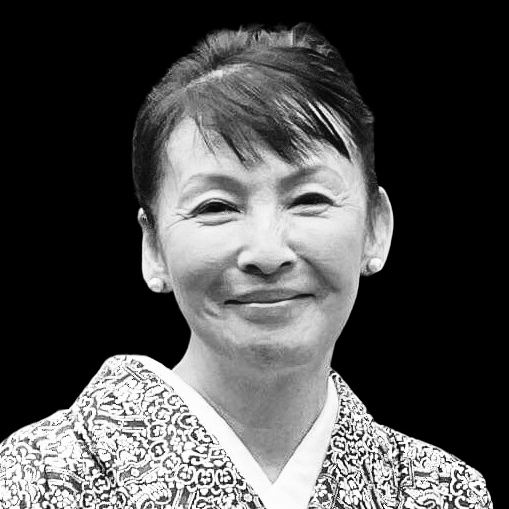
高泉 淳子 Takaizumi Atsuko
Started acting at Waseda University Theater Research Group. After graduating, started the theater company "Yu◉ Machine / Fully Automatic Theater" in 1983. As an actor, played a variety of roles, from boys and girls to old people, and gained popularity. In 2004, won world acclaim for performances of “Elephant Vanish,” a theatrical play of Murakami Haruki’s short stories, in New York, Paris, and London. She works on scripts as well, and in "A La Carte", a work which incorporated jazz into the theater, is a great long run that has been played for more than 30 years, winning the Sponici Art Excellence Award in 2009. In 2013, received the Yomiuri Theater Award for Best Actress at the Yomiuri Theater Awards for her "Dialogue with Horovitz", written by Mitani Koki on Parco's 40th anniversary. In 1994, received the Agency for Cultural Affairs Arts Festival Award for “La Vita”. Publications include “The Complete Works of Showa Theater” and “Takaizumi Atsuko's Work Record”.
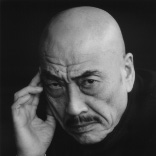
麿 赤兒 Maro Akaji
Born in 1943 in Nara prefecture. In 1965, participated in the theatrical company “Situation Theater” by Kara Juro. As an actor embodying Kara’s “The body theory of the privileged,” caused a big revolution in the theatrical world of the 1960s and 70s, having a big influence to the world. In 1966, while working as an actor, studied under Hijikata Tatsumi, the founder of the Butoh. In 1972, he launched the Dairakudakan and introduced a style with a strong overwhelming spectacle that uses large devices for Butoh. This style, named "Tenputenshiki" (being born into this world itself is a great talent), became a big topic both in Japan and abroad, and "Butoh" penetrated the world. Focuses on the release of new works and the development of Butoh dancers. Has established a pioneering position across genres, with a unique presence in movies, TV, and stage.
Archive video
NOBODY KNOWS 2021 at Tokushima.
NOBODY KNOWS 2021 at Komatsu, Ishikawa Pref.
Piano
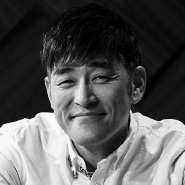
木原 健太郎 Kihara Kentaro
A composer and a pianist. Born in Hokkaido. After graduating from Berkeley College of Music, pursued on the piano solo activity mainly on simple melodies. Performs collaboration contests with artists such as Susan Osborn, Oshio Kotaro, and does many recordings. Develops the activity with “Enishi,” a unit with Noh and “CoRai,” a unit with Tsugaru shamisen. Plays an active part in many scenes including stages and TVs as a composer, a musical director, and an arranger. http://kentarokihara.net/
Art
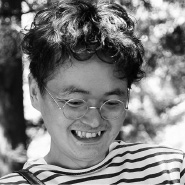
髙橋 匡太 Takahashi Kyota
Born in Kyoto on 1970. Graduated with a masters degree on sculpture from the Kyoto City University of Arts Graduate School of Arts. Works on public projections, installations, and performances with lights and pictures, performs widely both inside and outside Japan. Worked on the lighting projects of large-scale buildings such as Tokyo Station 100th anniversary light up, Nijo-jo Castle in Kyoto, and Towada Art Center, creating dynamic, molding-like pictures and works of the light. Deals with a large-scale participation type art projects much, including “Hikari-no-mi” and “Glow with City Project.” www.kyota.jp



